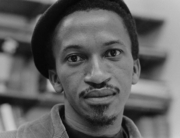
Tom Hardy as Forrest in LAWLESS (Richard Foreman/The Weinstein Company)
![]() Admittedly, I have been a huge fan of the John Hillcoat/Nick Cave filmmaking team since 2005’s The Proposition. The Australian Western had a big impact on the way I thought about and studied film, prompting me to focus on the relationship between music, image, and genre. In their most recent collaboration, director Hillcoat and screenwriter/composer Cave do not disappoint in creating a vivid visual and musical landscape. Keeping with their oft used themes of violence, family, and the dangerous line between civilization and chaos, Lawless is a wild ride that sticks with you long after the final showdown.
Admittedly, I have been a huge fan of the John Hillcoat/Nick Cave filmmaking team since 2005’s The Proposition. The Australian Western had a big impact on the way I thought about and studied film, prompting me to focus on the relationship between music, image, and genre. In their most recent collaboration, director Hillcoat and screenwriter/composer Cave do not disappoint in creating a vivid visual and musical landscape. Keeping with their oft used themes of violence, family, and the dangerous line between civilization and chaos, Lawless is a wild ride that sticks with you long after the final showdown.
Based on the 2008 novel by Matt Bondurant (on his true-life family history), the story follows the three bootlegging Bondurant brothers of Franklin County, Virginia, during the last years of Prohibition. Jack (Shia LaBeouf), the narrator and the youngest Bondurant, has little experience compared with his two older brothers. His obsession with the gangster lifestyle fuels his desire to be more than just a hired hand in his brothers’ outfit. The oldest, Howard (Jason Clarke), spends his time drinking a bit too much of the moonshine they illegally brew. Forrest, the true leader of the gang, mumbles quietly in the background, but brutally terrifies his enemies if the situation calls for it. Played by Tom Hardy, he’s also the true star of the film, and steals every scene with his rough demeanor and brooding humor. Forrest believes he and his brothers can never be killed, despite the risky business dealings constantly threatening their lives. When Charlie Rakes (an ever chameleon-like Guy Pearce), a special agent from Chicago who wants in on the Bondurant Brothers’ schemes, shows up in Franklin, their immortality is put to the test.
With a cast of great actors, it’s difficult to describe every character while expressing how well all their stories mesh together. There’s also Maggie (Jessica Chastain), a well-dressed city girl who mysteriously shows up looking for work at the Bondurants’ restaurant. Mia Wasikowska plays Jack’s love interest, Bertha, the sweet yet rebellious daughter of a local preacher, and Gary Oldman cameos as a local well-known gangster. Perhaps most noteworthy is relative newcomer Dale DeHaan as Cricket, Jack’s best friend and the smartest character on screen, and who’s best at brewing the illegal alcohol that fuels this violent world.
The bloodshed begins quickly and continually escalates, making the audience wait nervously for the next outburst. It’s hard to anticipate what each of these complex characters will do at any given moment, especially during the more suspenseful scenes. Cave’s script is both coarse and lyrical. His characters, especially Forrest, speak eloquently without sounding out of place. With each one—even with the smallest cameo—you get a sense that there is a so much more under the surface. (Oldman only spends a few moments on screen, but the significance of his character ties in well with Jack’s longing for gangster fame.) As with his previous films, Hillcoat emphasizes the landscape, making the backwoods of rural Virginia as much a character as any of the Bondurant brothers. Through gorgeous visuals and intricate characters, he transcends the typical shoot-’em-up gangster film without leaving behind its necessary tropes of guns and violence.
Also a well-known rock musician, Cave contributes to the score and soundtrack, and it’s impossible not to note the significance of the music. Unlike his work on The Proposition, in which he and his composer partner, Warren Ellis, wrote and performed the music and lyrics, Cave brings in other musicians to contribute songs that sound of the era, but are really more modern. Ralph Stanley, also heard on the Depression-set O Brother, Where Art Thou? soundtrack, does a wonderful bluegrass version of the Velvet Underground’s “White Light/White Heat,” which fits perfectly. Other featured singers are Willie Nelson and Emmylou Harris as well as Cave. It would be easy to view the soundtrack as the icing on the cake, but in Lawless’s case, it’s an essential component.






Leave A Comment